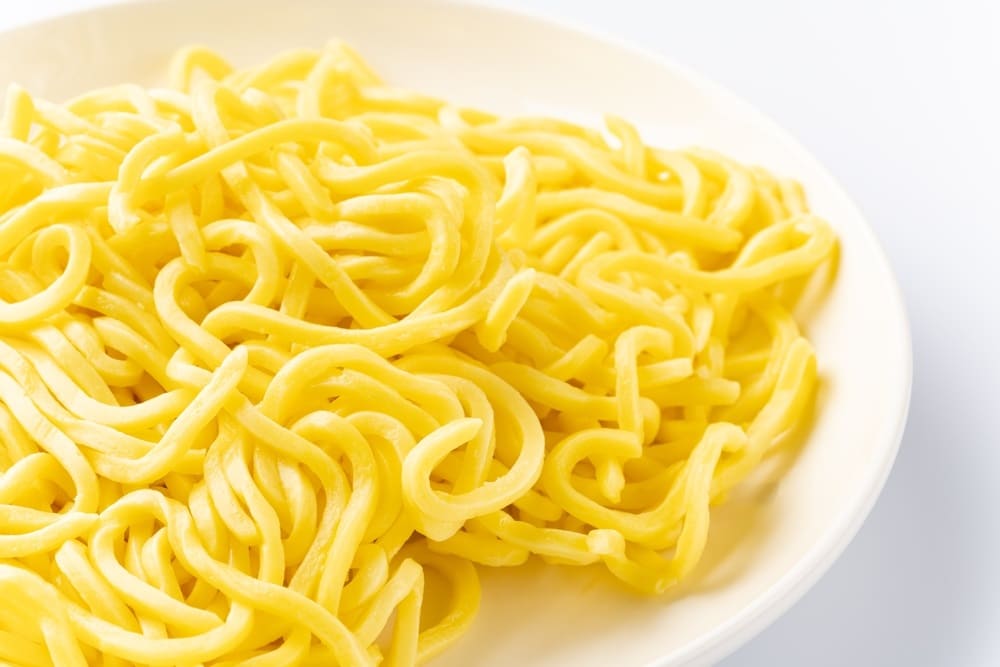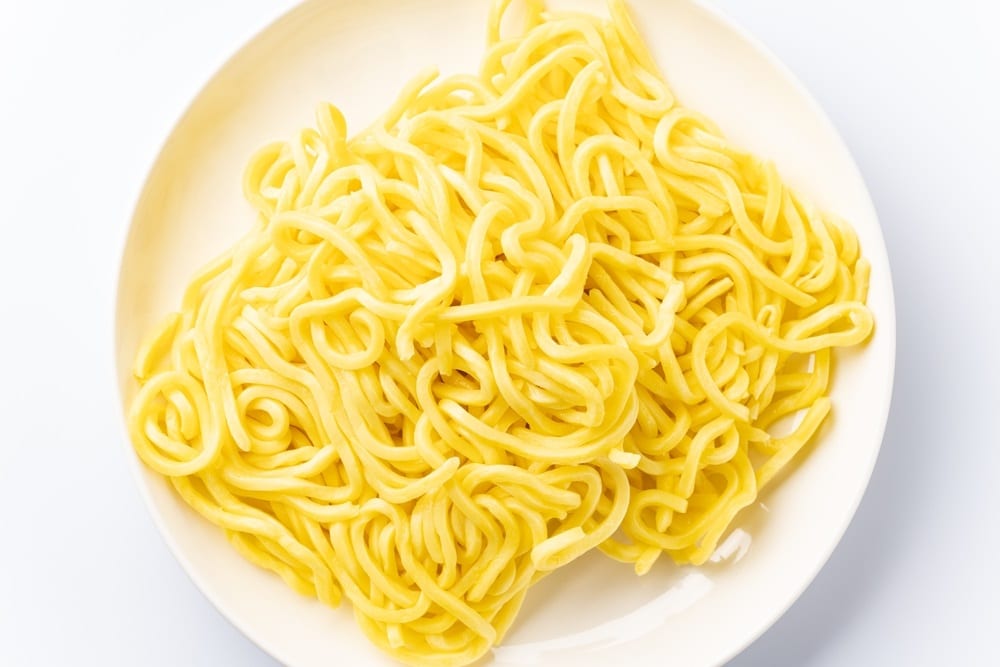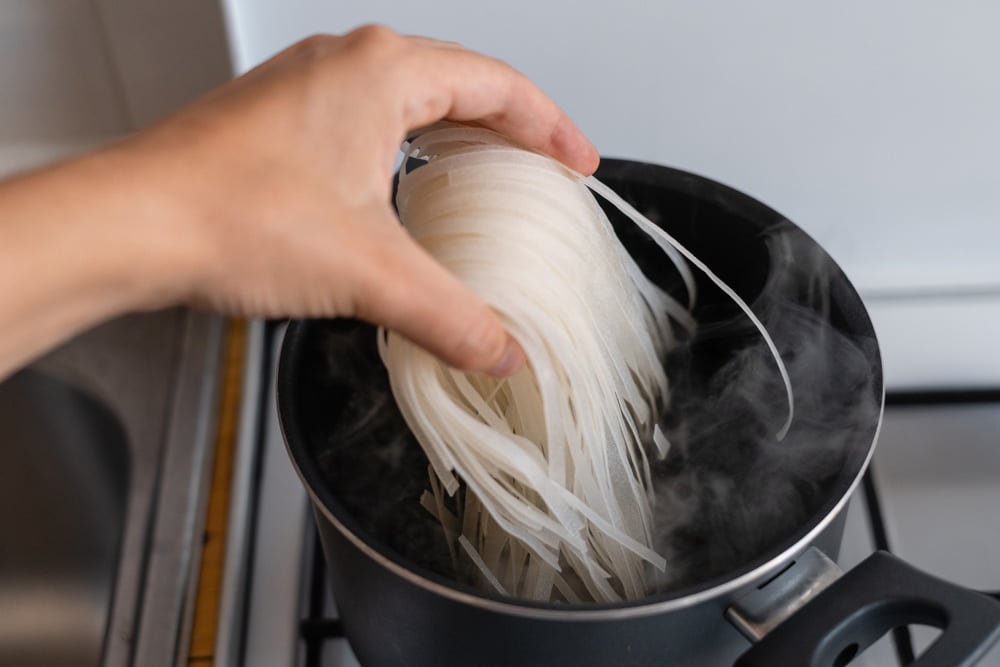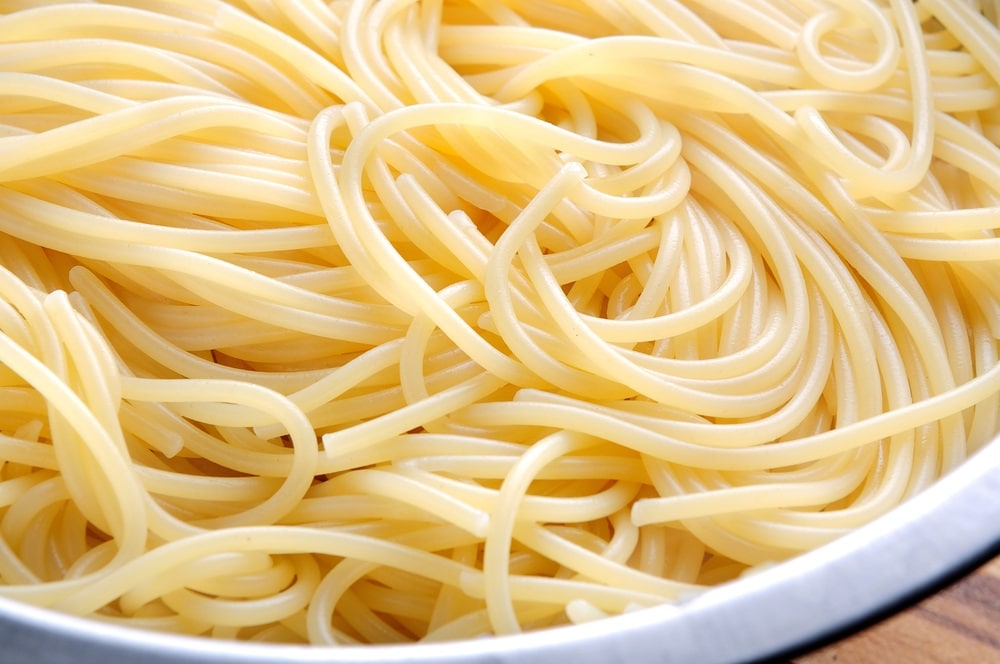
Ramen is possibly one of the best-known Japanese dishes that even Westerners enjoy. It is basically a flavorful broth served with noodles in it and some toppings.
It is flavored with things like miso and soy sauce and is sometimes topped with slivers of pork, nori, spring onions, or bamboo shoots. Almost every Japanese region has its own version but the basics remain the same.
The four basic components of ramen are broth, noodles, seasoning, and toppings. In today’s article, we are going to focus on the noodles.
What noodles are traditional for ramen?
Ramen noodles are basically wheat noodles made out of refined wheat flour, salt, and water. Their chewy consistency comes from an alkaline agent they are treated with.
This is what turns them slightly yellow too. While they can be found fresh, they are more readily available dried.
What noodles are traditional for yakisoba?
Surprise, surprise – ramen noodles and yakisoba noodles are usually one and the same nowadays! Yakisoba is an Asian dish of noodles in a sauce instead of a broth.
It has a different flavor from ramen because of the sauce’s ingredients. The noodles for both dishes on their own are very bland. The flavor comes from either the broth or the sauce.
To answer the question then, yes, you can use yakisoba noodles for ramen because the noodles are usually identical.
What gives yakisoba its distinctive taste?
Yakisoba is a simple, comforting noodle dish that tastes sweet and salty at the same time. The sauce contains Worcestershire sauce, sake, oyster sauce plus some sugar.
It is usually topped with stir-fried vegetables like cabbage, bell peppers, bean sprouts, and carrots while ramen is often topped with nori and pork. Also, pickled ginger is sometimes added to yakisoba’s topping.
Really, then, the only similarity between ramen and yakisoba is the noodles which are often the same in the West.
They are just treated a little differently when cooking and given different flavorings. Noodles for yakisoba are often pan-fried with a little oil whereas ramen noodles do not have oil on them.
The confusion seems to have come in because long ago in Japan, the word for simple “noodles” was “soba”. However, “soba” also means “buckwheat” and this is what genuine soba noodles (yuwari) are made from.
Buckwheat. The “yaki” part means “pan-fried”. Nowadays, however, soba noodles are made either from a combination of wheat flour and buckwheat flour or just wheat flour alone.
Wheat flour is often added or substituted because buckwheat produces a delicate noodle that is very difficult to work with and is more expensive. This is because buckwheat doesn’t contain gluten.
Can You Use Yakisoba Noodles for Ramen?
Let’s say you managed to get your hands on some genuine buckwheat yakisoba noodles. These are absolutely fine for making ramen. They are recommended for those who are gluten intolerant or who want to use a healthier noodle version.
However, there are some factors to keep in mind when using genuine buckwheat yakisoba noodles for ramen.
- Some brands don’t have kansui or egg on the ingredient list. As a result, the noodles tend to soak moisture more than ramen noodles and can become softer in a few minutes. So, yakisoba noodles can be used but you need to be careful as they are delicate!
- Yakisoba noodles are often much thinner than ramen noodles so will cook faster.
Which Other Noodles Can Be Used for Ramen?
We have already mentioned that yakisoba noodles are great for ramen, but if you are worried about the moisture and softness issue, we have 4 other noodle options that can be used!
1. Rice Noodles
As the name suggests, these noodles are made from rice flour. These noodles are famous for their delicate semi-transparent appearance and chewy texture and are usually added to pad Thai or pho.
However, rice noodles are equally great for ramen and will make a perfect addition to a rich broth. In addition to rice noodles, rice pasta may be used.
2. Glass Noodles
These are thin, transparent noodles that are also called cellophane noodles. These noodles look like clear pieces of thread and make a great addition to ramen, as well as stir-fries.
Glass noodles have a very light flavor and their springy texture adds to the appeal of a good ramen broth.
3. Kelp Noodles
In case you want noodles for ramen that have a rich nutrient count, kelp noodles are optimal. These noodles are loaded with vitamin K, calcium, iodine, and iron with zero fats.
In addition, they have a delightfully chewy texture. Overall, they’re a great option for ramen!
4. Spaghetti
We kept this one for last because it is really not our first choice. However, if you have made a beautiful ramen broth only to find that there are no other noodles available, spaghetti will do the job.
If you are going to use this option, we suggest giving the pasta a tweak to make it more authentic. When Japanese ramen noodles are manufactured, a chemical called kansui is added to the noodle dough (it’s potassium carbonate).
This gives the noodles their familiar eggy color and smell and chewiness. You probably don’t have any kansui in your pantry but baking soda will also work. Simply add a tablespoon to the water when you cook the pasta.
To Conclude
We hope we have cleared up the confusion and answered your question. Yes, you can use yakisoba noodles for ramen and several other noodle types too. Enjoy your ramen!


